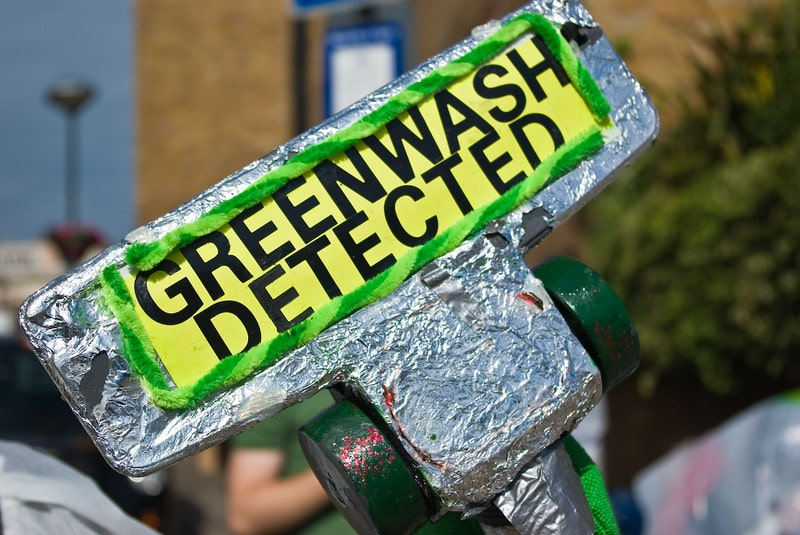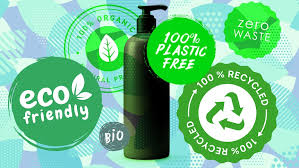In today’s environmentally conscious world, many companies are emphasizing their commitment to sustainability. This is especially true in the realm of e-waste recycling, where responsible disposal of electronic devices is crucial. But with so many companies making claims about their eco-friendly practices, it can be hard for consumers to differentiate genuine efforts from mere “greenwashing.”
This blog delves into the world of e-waste recycling, helping you navigate the claims of recycling companies and make informed decisions. We’ll explore:
- What is Greenwashing?
- Why Does Greenwashing Matter in E-waste Disposal?
- How to Spot Greenwashing in E-waste Recycling Claims
- Finding Reputable E-waste Recycling Companies
- Empowering Yourself as a Responsible E-waste Consumer

What is Greenwashing?
Greenwashing, a term gaining significant traction in recent years, refers to a deceptive marketing tactic employed by companies to create a misleading impression of their environmental commitment. Imagine a company painting a picture of eco-friendlinessthrough their advertising, using lush green landscapes and happy recycling workers, yet their actual practices fall far short of this carefully crafted image.
Here’s a closer look at how greenwashing manifests in the realm of e-waste recycling, where responsible disposal is crucial for safeguarding our health and planet.
Greenwashing Tactics: Decoding the Deception
Companies adept at greenwashing employ various tactics to manipulate consumers. Let’s dissect some of the most common ones:
The Vagueness Trap:
Companies liberally sprinkle terms like “eco-friendly” or “sustainable” throughout their marketing materials. However, these terms lack concrete meaning and fail to provide any specifics about their actual recycling processes. When faced with such ambiguity, ask yourself: “What specific actions are they taking to be eco-friendly?”
Image Over Substance:
Companies might bombard you with visually appealing images of state-of-the-art recycling facilities or smiling workers sorting electronics. While these images might create a positive first impression, they rarely provide any concrete information about the actual recycling methods employed or the environmental impact of these processes.
Cherry-Picking the Data:
Some companies might selectively highlight a single positive aspect of their recycling process, like their energy efficiency. However, they conveniently omit mentioning potentially harmful practices like the use of hazardous chemicals or the lack of proper worker safety protocols. Be wary of companies that only showcase a portion of the story.
The Devastating Impact of Greenwashing in E-waste Disposal: A Looming Environmental Crisis
Greenwashing in e-waste recycling isn’t just misleading marketing – it’s a serious threat to our environment and health. When companies mask irresponsible practices with a veneer of eco-friendliness, they dupe consumers into believing their electronics are being handled sustainably. This facade leads to a cascade of negative consequences:
1. Poisoning Our Planet: A Slow and Silent Threat
E-waste is a cocktail of hazardous materials like lead, mercury, arsenic, and flame retardants. Improper recycling, often facilitated by greenwashing tactics, leads to these toxins being released into the environment. Here’s how it unfolds:
Landfill Leaching:
Landfillsaren’t designed to handle e-waste. Over time, rainwater seeps through these landfills, dissolving the toxic materials from electronics. This contaminated water, known as leachate, can then pollute surrounding soil and groundwater.
Polluted Water Sources:
Contaminated groundwater can eventually make its way into our rivers, streams, and even drinking water supplies. This poses a serious health threat to humans and wildlife alike. Exposure to these toxins can lead to a range of health problems, from developmental issues in children to neurological damage in adults.
Long-Term Impact:
The toxic effects of these materials can persist in the environment for a long time, contaminating ecosystems and posing a threat to future generations. Greenwashing allows this slow poisoning of our planet to continue, jeopardizing the health of our environment and the well-being of countless species.
2. Sacrificing Workers’ Health for a False Image
The consequences of greenwashing in e-waste recycling extend beyond environmental damage. Improper recycling practices, often hidden behind a facade of sustainability, can put the health of workers at significant risk:
Unsafe Working Conditions:
Informal recycling facilities, which some greenwashing companies might be unknowingly supporting, often lack proper safety protocols. Workers in these facilities are exposed to hazardous materials without adequate protection, leading to respiratory problems, skin irritation, and even heavy metal poisoning.
Global Health Concern:
The issue isn’t confined to specific regions. E-waste shipped for “recycling” under pretenses can sometimes end up in these unsafe facilities, creating a global health concern.
A Hidden Human Cost:
Greenwashing allows companies to avoid accountability for the human cost associated with irresponsible e-waste recycling. These workers, often in developing countries, become the silent victims of our electronic habits.
3. Squandering Valuable Resources: A Missed Opportunity
E-waste isn’t just waste; it’s a treasure trove of valuable resources waiting to be tapped. These devices contain precious metals like copper and gold, as well as rare earth elements crucial for modern technology. Greenwashing thwarts the responsible recovery and re-use of these resources:
Increased Reliance on Virgin Materials:
When valuable resources from e-waste aren’t recovered, the demand for virgin materials increases. This translates to more mining, which can lead to deforestation, soil erosion, and water pollution at mining sites.
Exhaustion of Scarce Resources:
Some rare earth elements used in electronics are becoming increasingly scarce. Greenwashing hinders the recycling of these critical materials, forcing us to rely on dwindling reserves.
A Missed Opportunity for Sustainability:
Responsible e-waste recycling offers a chance to create a circular economy for electronics. By recovering and re-using resources, we can minimize reliance on virgin materials and create a more sustainable future.

How to Spot Greenwashing in E-waste Recycling Claims
Here are some tips to help you identify greenwashing in e-waste recycling claims:
- Look for Transparency: Reputable companies will be transparent about their recycling process. They will clearly explain what happens to your e-waste after you drop it off.
- Check for Certifications: Look for companies certified by organizations like R2 or e-Stewards. These certifications ensure that the company adheres to strict environmental and social responsibility standards.
- Do Your Research: Don’t rely solely on a company’s website. Read independent reviews and research the company’s practices before trusting their claims.
- Ask Questions: Don’t be afraid to contact the company directly and ask questions about their recycling process. A reputable company will be happy to answer your questions.
Here’s an example:
Greenwashing Claim: “We recycle all your electronics responsibly!”
Red Flags: This statement is vague and doesn’t provide any details about the recycling process. Ask the company: “What happens to my e-waste after I drop it off? Are you certified by any independent organizations?”
Finding Reputable E-waste Recycling Companies
Once you’ve learned how to spot greenwashing, you can start looking for reputable e-waste recycling companies. Here are some resources to help you:
- The Environmental Protection Agency(EPA) E-waste Guide.
- The Basel Action Network (BAN) e-waste Directory.
- Earth911: (searchable database of recycling facilities)
These resources can help you find certified e-waste recyclers in your area.
Empowering Yourself as a Responsible E-waste Consumer
Understanding greenwashing and identifying reputable e-waste recycling companies are crucial steps, but your journey as a responsible e-waste consumer doesn’t end there. Here’s how you can empower yourself to make a lasting impact:
1. Become a Savvy Shopper: Think Before You Buy
Our buying habits significantly influence the e-waste problem. Here’s how to be a more mindful consumer:
- Prioritize Durability: Look for electronics built to last. Research brands are known for their robust construction and quality materials. This reduces the need for frequent upgrades and minimizes e-waste generation.
- Upgradeability Matters: Consider devices designed with user upgrades in mind. Look for electronics where you can easily swap out components like RAM or storage, extending their functionality and lifespan.
- Fight Planned Obsolescence: Planned obsolescence is the practice of designing products with a limited lifespan to encourage frequent replacements. Be wary of features that seem gimmicky or unnecessary, as they might be designed for short-term appeal rather than long-term use.
2. Make Your Electronics Last: Extend Their Life
By taking good care of your electronics, you can significantly extend their lifespan, reducing the need for frequent replacements and e-waste generation:
- Treat Them with TLC: Keep your electronics clean and dust-free. Avoid exposing them to extreme temperatures or liquids. Regular software updates can improve performance and address security vulnerabilities.
- Invest in Protection: Consider using cases, screen protectors, and cooling pads to safeguard your electronics from physical damage and overheating.
3. Explore Alternatives to Disposal: Give Your Electronics a Second Life
Not all electronics need to be recycled immediately. Here are some ways to extend their utility:
- The Power of Donation: If your electronics are still functional, consider donating them to charities or schools. This provides valuable resources to those in need and keeps them out of landfills.
- Sell and Share the Joy: Selling your old electronics online or through consignment shops allows others to benefit from them while putting some extra cash in your pocket.
- Get Creative with Repurposing: With a little ingenuity, you can repurpose old electronics for new uses. Turn an old tablet into a digital photo frame or use a defunct smartphone as a dedicated music player.
4. Be a Voice for Change: Advocate and Take Action
Your voice matters! Here’s how you can contribute to a larger movement towards responsible e-waste management:
- Support Sustainable Businesses: Do your research and support companies committed to sustainable practices. Look for brands with take-back programs for used electronics or those using recycled materials in their products.
- Spread Awareness: Talk to friends and family about responsible e-waste disposal practices. Educate them about greenwashing and empower them to make informed choices.
- Advocate for Change: Contact your local representatives and urge them to implement policies that promote responsible e-waste management. Support initiatives that encourage recycling infrastructure development and hold companies accountable for their e-waste practices.
Remember:Every little bit counts! By making informed choices about e-waste disposal, you can help ensure our old electronics don’t become a burden on our planet.
Conclusion
The growing issue of e-waste demands a critical eye from consumers. Don’t be fooled by greenwashing tactics. By learning how to spot them and seeking out reputable e-waste recycling companies, you can be part of the solution. Together, we can create a more sustainable future for electronics disposal, protecting our environment and ensuring valuable resources are not wasted.


tiktok ads account buy https://tiktok-ads-account-buy.org